Physicists give us an early view of a third kingdom of quasiparticles that only arise in two dimensions.


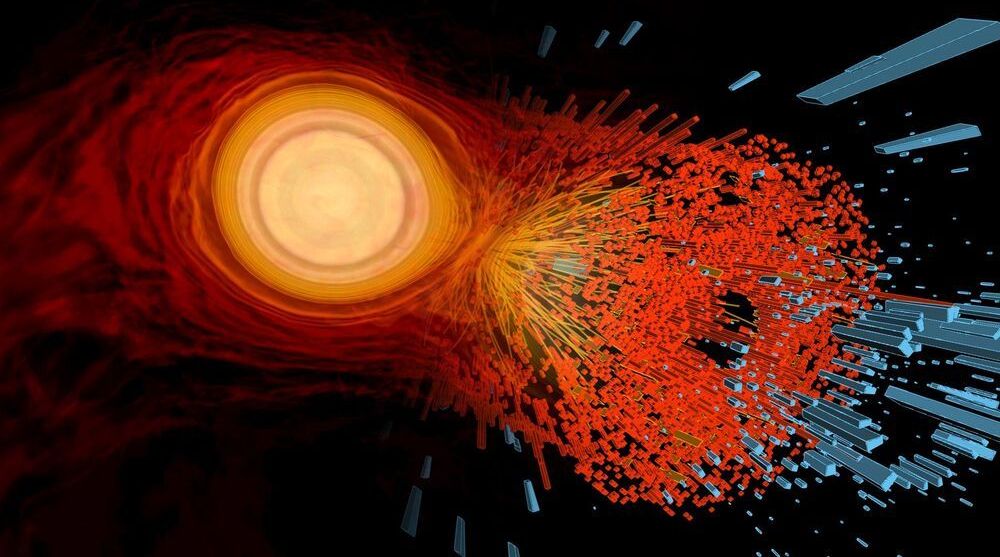
Computer models of merging neutron stars predicts new signature in the gravitational waves to tell when this happens.
Neutron stars are among the densest objects in the universe. If our Sun, with its radius of 700,000 kilometers were a neutron star, its mass would be condensed into an almost perfect sphere with a radius of around 12 kilometers. When two neutron stars collide and merge into a hyper-massive neutron star, the matter in the core of the new object becomes incredibly hot and dense. According to physical calculations, these conditions could result in hadrons such as neutrons and protons, which are the particles normally found in our daily experience, dissolving into their components of quarks and gluons and thus producing a quark-gluon plasma.
This simulation shows the density of the ordinary matter (mostly neutrons) in red-yellow. Shortly after the two stars merge the extremely dense center turns green, depicting the formation of the quark-gluon plasma.

Circa 2009
Present ultrafast laser optics is at the frontier between atto- and zeptosecond photon pulses, giving rise to unprecedented applications. We show that high-energetic photon pulses down to the yoctosecond time scale can be produced in heavy-ion collisions. We focus on photons produced during the initial phase of the expanding quark-gluon plasma. We study how the time evolution and properties of the plasma may influence the duration and shape of the photon pulse. Prospects for achieving double-peak structures suitable for pump-probe experiments at the yoctosecond time scale are discussed.
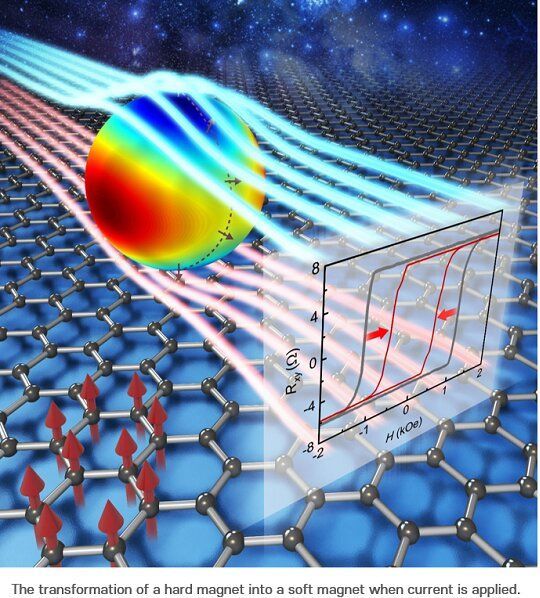
Researchers at Pohang University of Science and Technology (POSTECH) and Seoul National University in South Korea have demonstrated a new way to enhance the energy efficiency of a non-volatile magnetic memory device called SOT-MRAM. Published in Advanced Materials, this finding opens up a new window of exciting opportunities for future energy-efficient magnetic memories based on spintronics.
In modern computers, the random access memory (RAM) is used to store information. The SOT-MRAM (spin-orbit torque magnetic RAM) is one of the leading candidates for the next-generation memory technologies that aim to surpass the performance of various existing RAMs. The SOT-MRAM may operate faster than the fastest existing RAM (SRAM) and maintain information even after the electric energy supply is powered off whereas all fast RAMs existing today lose information as soon as the energy supply is powered off. The present level of the SOT-MRAM technology falls short of being satisfactory, however, due to its high energy demand; it requires large energy supply (or large current) to write information. Lowering the energy demand and enhancing the energy efficiency is an outstanding problem for the SOT-MRAM.
In the SOT-MRAM, magnetization directions of tiny magnets store information and writing amounts to change the magnetization directions to desired directions. The magnetization direction change is achieved by a special physics phenomenon called SOT that modifies the magnetization direction when a current is applied. To enhance the energy efficiency, soft magnets are ideal material choice for the tiny magnets since their magnetization directions can be easily alterned by a small current. Soft magnets are bad choice for the safe storage of information since their magnetization direction may be altered even when not intended—due to thermal noise or other noise. For this reason, most attempts to build the SOT-MRAM adopt hard magnets, because they magnetize very strongly and their magnetization direction is not easily altered by noise. But this material choice inevitably makes the energy efficiency of the SOT-MRAM poor.
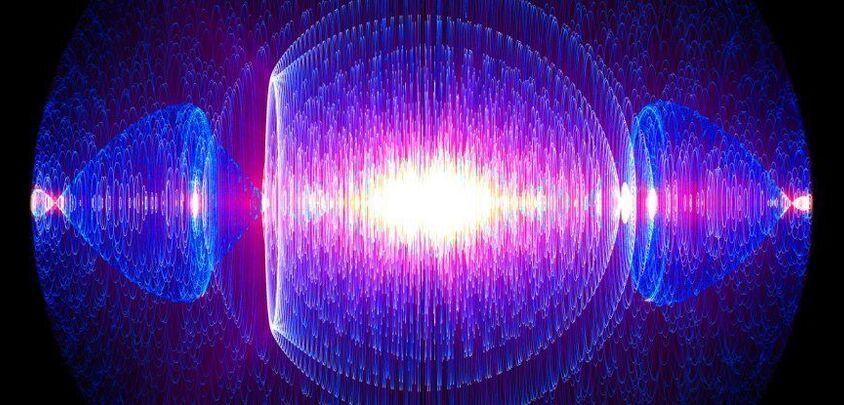
“I’ve often seen a cat without a grin,” thought Alice. “But a grin without a cat! It’s the most curious thing I ever saw in all my life!”
It’s an experience eminent physicist Yakir Aharonov can relate to. Together with fellow Israeli physicist Daniel Rohrlich, he’s shown theoretically how a particle might show its face in a corner of an experiment without needing its body anywhere in sight.
To be more precise, their analysis argues information could be transferred between two points without an exchange of particles.
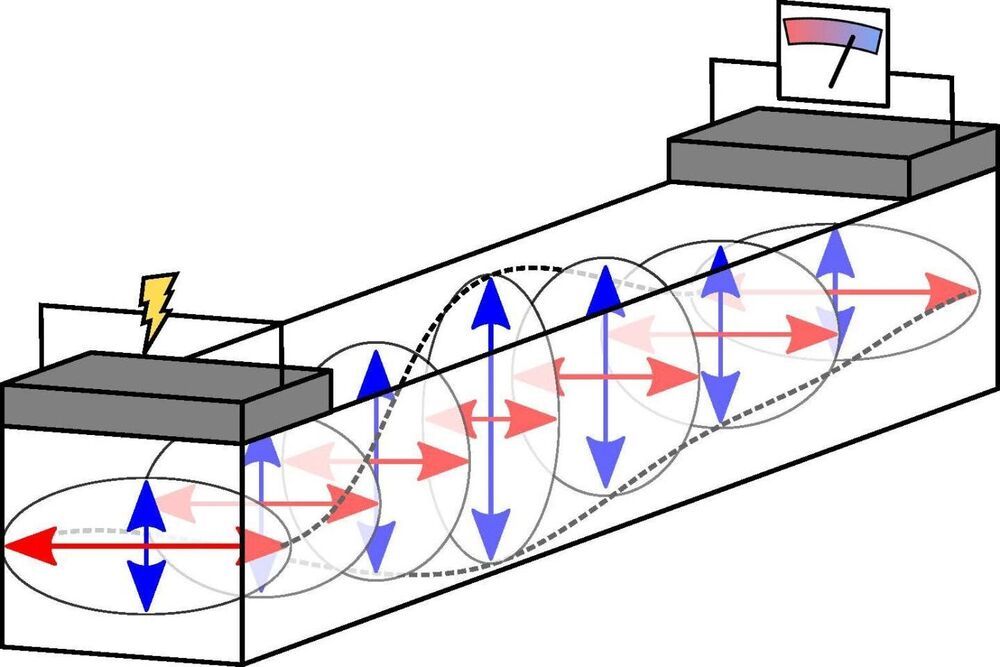
Be it with smartphones, laptops, or mainframes: The transmission, processing, and storage of information is currently based on a single class of material—as it was in the early days of computer science about 60 years ago. A new class of magnetic materials, however, could raise information technology to a new level. Antiferromagnetic insulators enable computing speeds that are a thousand times faster than conventional electronics, with significantly less heating. Components could be packed closer together and logic modules could thus become smaller, which has so far been limited due to the increased heating of current components.
Information transfer at room temperature
So far, the problem has been that the information transfer in antiferromagnetic insulators only worked at low temperatures. But who wants to put their smartphones in the freezer to be able to use it? Physicists at Johannes Gutenberg University Mainz (JGU) have now been able to eliminate this shortcoming, together with experimentalists from the CNRS/Thales lab, the CEA Grenoble, and the National High Field Laboratory in France as well as theorists from the Center for Quantum Spintronics (QuSpin) at the Norwegian University of Science and Technology. “We were able to transmit and process information in a standard antiferromagnetic insulator at room temperature—and to do so over long enough distances to enable information processing to occur”, said JGU scientist Andrew Ross. The researchers used iron oxide (α-Fe2O3), the main component of rust, as an antiferromagnetic insulator, because iron oxide is widespread and easy to manufacture.
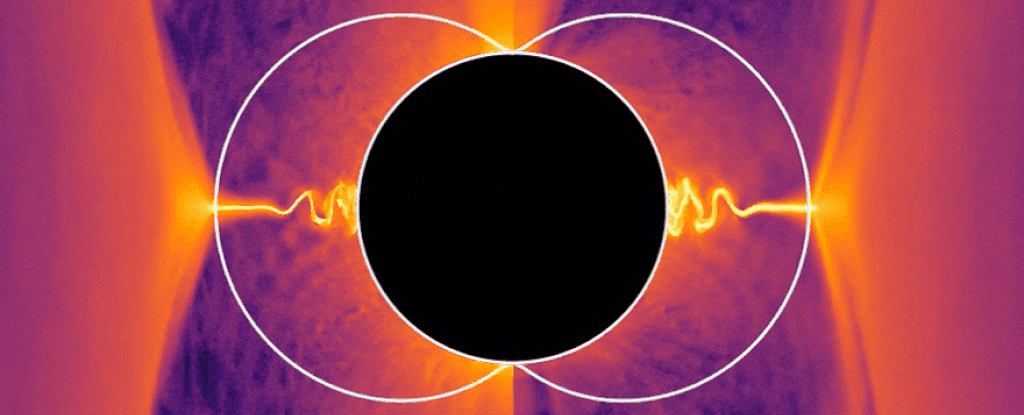
When a black hole is actively feeding, something strange can be observed: enormously powerful jets of plasma shoot from its poles, at velocities approaching light speed.
Given the intense gravitational interactions at play, exactly how those jets form is a mystery. But now, using computer simulations, a team of physicists has hit upon an answer — particles seeming to have “negative energy” extract energy from the black hole and redirect it to the jets.
And this theory has, for the first time, united two different and seemingly irreconcilable theories about how energy can be extracted from a black hole.
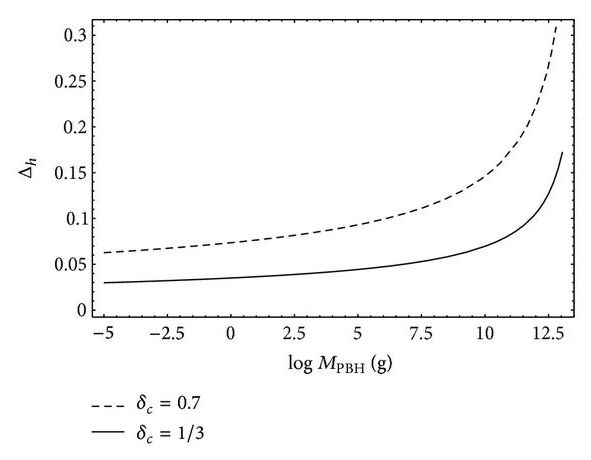
Circa 2014
We propose the new dark matter particle candidate—the “black hole atom,” which is an atom with the charged black hole as an atomic nucleus and electrons in the bound internal quantum states. As a simplified model we consider the central Reissner-Nordström black hole with the electric charge neutralized by the internal electrons in bound quantum states. For the external observers these objects would look like the electrically neutral Schwarzschild black holes. We suppose the prolific production of black hole atoms under specific conditions in the early universe.

Northwestern University researchers have developed a first-of-its-kind life-like material that acts as a soft robot. It can walk at human speed, pick up and transport cargo to a new location, climb up hills and even break-dance to release a particle.
Nearly 90% water by weight, the centimeter-sized robot moves without complex hardware, hydraulics or electricity. Instead, it is activated by light and walks in the direction of an external rotating magnetic field.
Resembling a four-legged octopus, the robot functions inside a water-filled tank, making it ideal for use in aquatic environments. The researchers imagine customizing the movements of miniature robots to help catalyze different chemical reactions and then pump out the valuable products. The robots also could be molecularly designed to recognize and actively remove unwanted particles in specific environments, or to use their mechanical movements and locomotion to precisely deliver bio-therapeutics or cells to specific tissues.
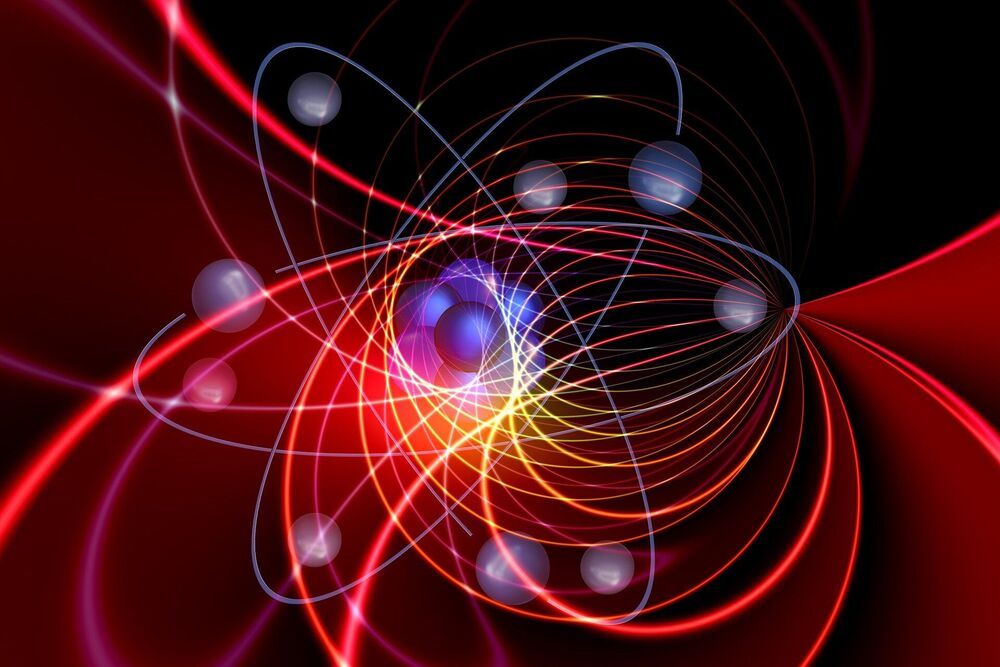
Researchers have found a way to protect highly fragile quantum systems from noise, which could aid in the design and development of new quantum devices, such as ultra-powerful quantum computers.
The researchers, from the University of Cambridge, have shown that microscopic particles can remain intrinsically linked, or entangled, over long distances even if there are random disruptions between them. Using the mathematics of quantum theory, they discovered a simple setup where entangled particles can be prepared and stabilized even in the presence of noise by taking advantage of a previously unknown symmetry in quantum systems.
Their results, reported in the journal Physical Review Letters, open a new window into the mysterious quantum world that could revolutionize future technology by preserving quantum effects in noisy environments, which is the single biggest hurdle for developing such technology. Harnessing this capability will be at the heart of ultrafast quantum computers.